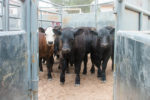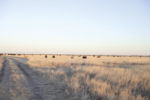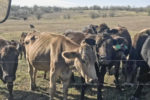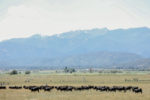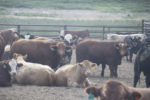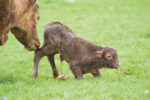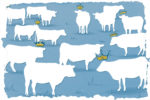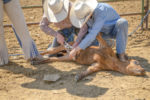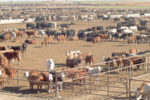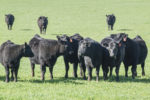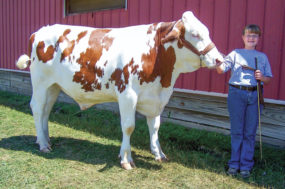Cattle Management
Some simple safety practices can help prevent the spread of zoonotic disease to feedlot workers.
Read More
The value of preconditioning calves
Learn about the health component of vaccines, dewormers and diets used in preconditioning calves. Value-added plans are available at many feedyards, sale barns, auctions, drug companies, breed associations and state programs.
Read More
Stress effects on the cow herd
Stress can come at your cattle in myriad forms, from the environment to handling events. While some stress is unavoidable, identifying ways to reduce it will pay dividends in your herd’s health and profitability.
Read More
How critical production decisions affect the fate of cow herd numbers
As we face the smallest U.S. cow herd in decades, individual producers’ decisions regarding sales, retention and expansion will add up to big differences across individual operations and the entire industry.
Read More
Changing cattle markets lead to changing cattle performance
Performance metrics such as feed efficiency and cost of gain have informed cattle feeders’ decision-making for years. However, understanding how these metrics apply at different stages of feeding and how packers value them can increase an operation’s profitability even further.
Read More
What to record at calving time
Several data points, from birthweight to udder score, can not only determine the success of this calving season but can inform management decisions looking forward.
Read More
Cows without crowns
Spring-calving season is an important time for culling decisions. Cows that have been treated well but lack in performance should be evaluated at this time.
Read More
Pain relief for castration: Are your castration practices up to date?
We all know the benefits of castration. However, the discomfort calves experience with band castration lasts for weeks. Current pain-control strategies do not address this problem. The recent introduction of a lidocaine-impregnated elastrator band gives producers the tools to do better.
Read More
Creating a culture of safety in your feedyard
Safety in the feedyard is important, and it all starts with the culture surrounding it. Communicate about safety practices to help manage your feedyard effectively.
Read More
Management strategies for young cows
Managing young cows differently from mature cows – from nutrition to breeding practices – can help set them up for success in the herd.
Read More
